Length Teaching Resources
Teach students how to measure length this school year with printable worksheets, educational games, digital activities and more primary school resources designed to help students learn how to measure objects and distances.
This extensive collection of teaching resources is aligned to the Australian curriculum and covers topics such as informal units for measuring length, measurement tools, standard units and more — all designed to save primary teachers time on lesson planning. Created by expert teachers, each resource in this maths collection has been carefully reviewed and curated by our team. That means it's ready to use in the classroom! You'll even find editable resources, plus differentiated options.
New to teaching length, or just look for fresh ways to engage your students? Read on for a primer from our teaching team!
What Is Length? A Kid-Friendly Definition
Let's start out with an easy way to explain the meaning of length to your students!
Length is the word we use to explain the measurement of how long an object or distance is. It is typically measured in units such as metres or centimetres.
In primary school, students typically begin by learning basic concepts related to length, such as:
- Measurement tools — Ruler, tape measure, metre stick, etc.
- Units of measurement — Centimetre, metre, kilometre, etc.
- Comparing and ordering lengths — Shorter, longer, tallest, shortest, etc.
Units of Measuring Length
In Australia, students learn to measure length using the units of the metric system. Because it's based on units of 10, the metric system makes it easy for students to convert between different units of measurement.
Here are the most common length measurements that your students will likely use in primary school:
Millimetre (mm)
This is the smallest unit of length in the metric system. One millimetre is equal to 1/1000 of a metre.
Centimetre (cm)
One centimetre is equal to 1/100 of a metre. This unit of length is found on your classroom ruler.
Metre (m)
This is the basic unit of length in the metric system. One metre is equal to 100 centimetres.
Kilometre (km)
One kilometre is equal to 1000 metres and is used for measuring longer distances, such as the distance between cities or countries.
How to Teach Length
Looking for some fun ways to teach your students about length? Explore this whole collection for printables and digital activities, and take a look at some fun ideas from our teacher team!
- Measure Yourself — This is an activity that never gets old for students — measuring themselves with a measuring tape! Have students measure their height and then compare their height to their classmates. Students should write down each measurement, and then they can make comparisons such as who is taller or shorter.
- Scavenger Hunt — Scavenger hunts add an element of mystery to this maths skill. Hide various objects around the classroom and have students use a ruler to measure the length of each object.
- Explore Non-Standard Measurement — Before introducing formal measurement tools, using non-standard items such as crayons and paper clips to measure items in the classroom is a good way to help students understand how items relate to one another in size.
- Develop a Length Obstacle Course — Create an obstacle course using cones, hula hoops, and other items. Have students measure the length of the course using a tape measure or metre stick. Once they're done, allow them to get active by actually moving through the course.
- Take a Maths Walk With Your Rulers — This is an excellent idea for real-world application! Take a walk around your school and have students measure the length of different objects they encounter along the way, such as the length of the hallway or the height of a door.
- Plus Plan
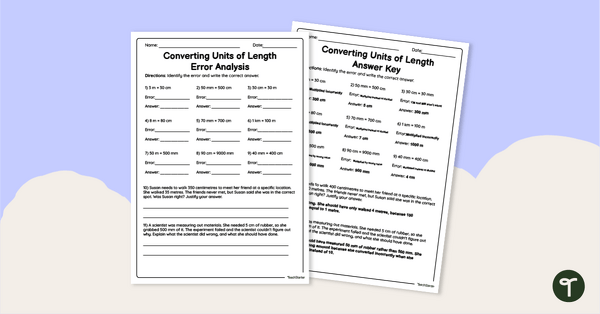
Converting Units of Length – Error Analysis Worksheet
Analyse length conversions to identify and correct mistakes with this error analysis worksheet.
- Free Plan
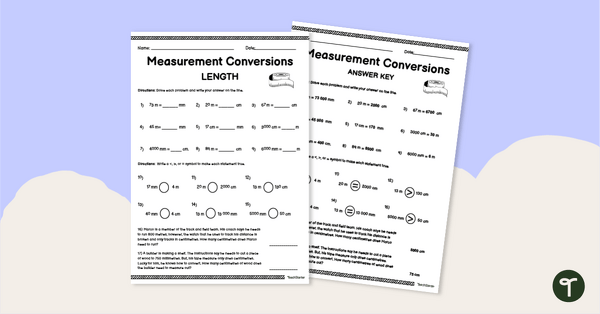
Measurement Conversions - Length – Worksheet
Use ratio reasoning to practise converting units of length with this worksheet.
- Plus Plan
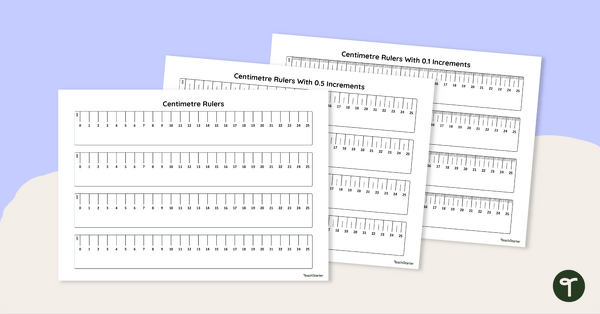
Printable Rulers for the Classroom
Excite your students about mastering precise measurements with these printable centimetre rulers.
- Plus Plan
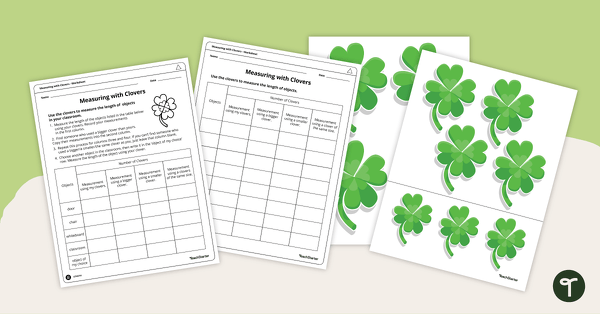
Measuring Length with Clovers Worksheet
Measure familiar objects using our lucky clover in this St Patrick’s Day maths activity!
- Plus Plan
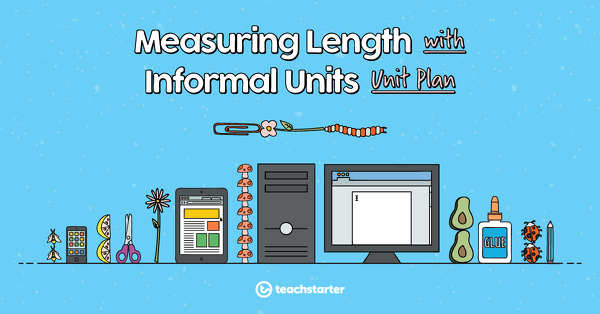
Revision of Length
A 60 minute lesson in which students will revise and consolidate the concept of length.
- Plus Plan
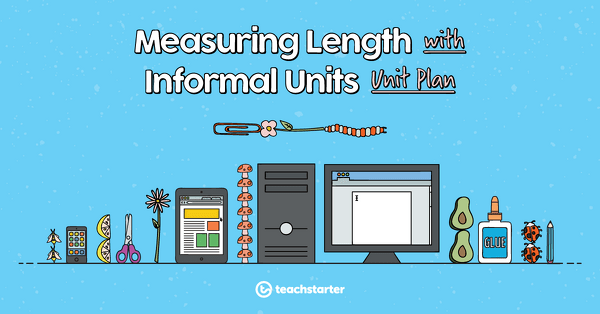
Measuring and Comparing Length
A 60 minute lesson in which students will measure and compare lengths of objects using informal units.
- Plus Plan
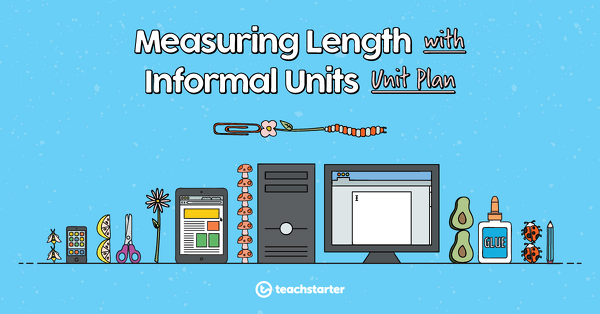
Measuring Length with Informal Units Unit Plan
This Mathematics unit addresses the concept of measuring, comparing and ordering length using informal units.
- Plus Plan
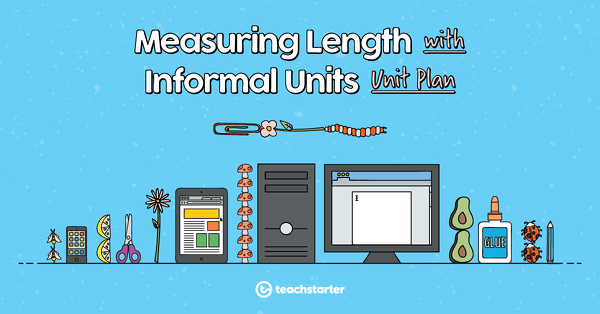
Length Investigation - The Longest Finger
A 60 minute lesson in which students will apply knowledge and understanding of length to a real-world context.
- Plus Plan
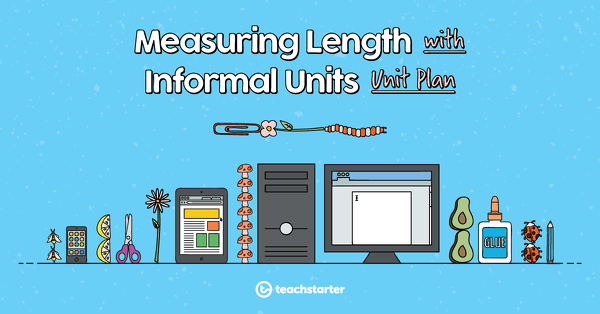
Measuring, Comparing and Ordering Height
A 60 minute lesson in which students will measure, compare and order height using informal units.
- Plus Plan
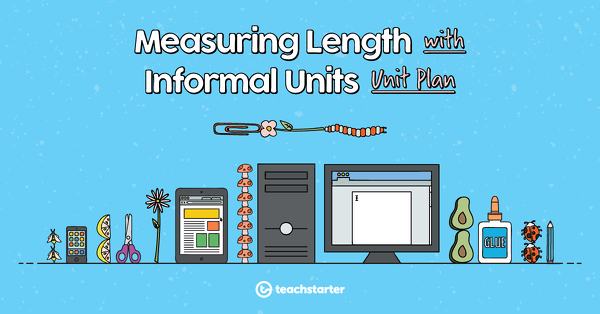
Measuring Length with Dinosaur Footprints
A 60 minute lesson in which students will measure and compare lengths of objects using informal units.
- Plus Plan
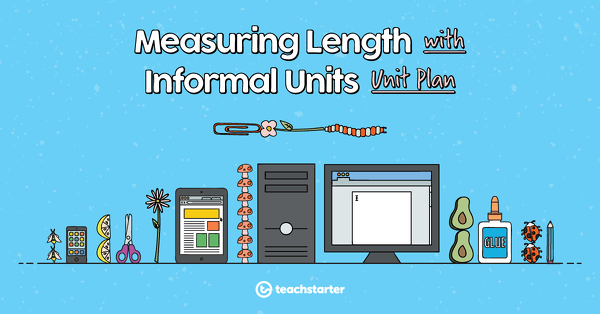
Assessment - Measuring Length with Informal Units
A 30 minute assessment in which students will demonstrate their knowledge and understanding of length.